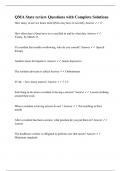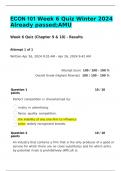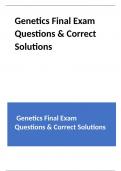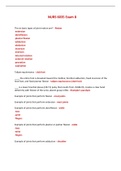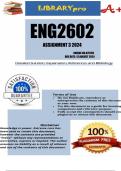Other
Basic Biology BLG1501 Assignment 2 semester 2
- Institution
- University Of South Africa (Unisa)
- Book
- Biology
This is assignment 2 semester 2 of basic biology. I received high 90's for this assignment. Fully detailed descriptions at every single question. Best document to buy as a guide to assignment 2. I do not condone plagiarism, please do not copy and paste.
[Show more]





